Fry’s Electronics was too good for a brick-and-mortar world.
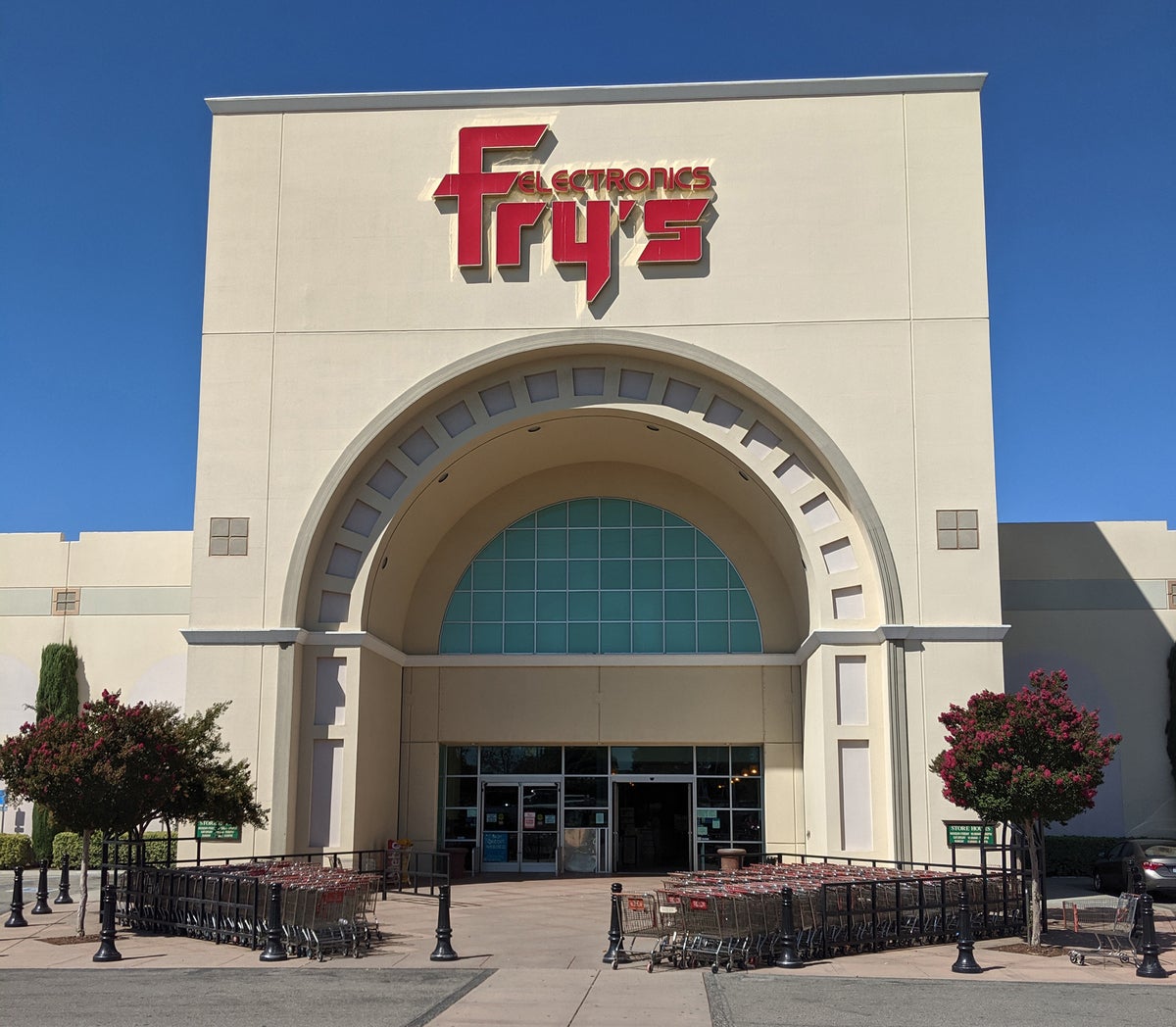
Gordon Mah Ung/IDG
Today’s Best Tech Deals
Picked by PCWorld’s Editors
Top Deals On Great Products
Picked by Techconnect’s Editors
Watching Fry’s Electronics finally shut down this week was truly the end of an era for me.
When I was younger, I’d cobble together a PC by combing through ads placed in the local computer weekly newspaper (yes, they had those) and driving to some non-descript industrial building in Silicon Valley.
After getting the stink-eye from the person eating lunch in the lobby, I’d leave with some ISA sound card or motherboard. It felt more like I was buying illegal fireworks than building a PC.
Fry’s in its glory days
Fry’s Electronics was truly glorious by comparison. With its big-box approach, bright lights, and endless aisles of components, printers, monitors, and software, along with soldering irons, heat shrink tubing and power supplies, Fry’s made PC building a legit lifestyle worthy of being out in public.
My friends and I would mountain-bike in the morning, and then gather around a desktop and decide more RAM might make this ancient 386 run Windows 95 better. That meant a trip to Fry’s, so we’d pile into a car and make the 30-mile drive. For nerds, it was a pilgrimage, a bonding experience, and a place for the tribe to gather.
Fry’s Electronics would usually run weekly, eight-page ad circulars in the newspaper (they had those, remember), much like your local grocery store still does—except instead of offering deals on Budweiser or bacon, Fry’s would promote a DVD player with component-out, or maybe a clearance on 28.8-baud modems.
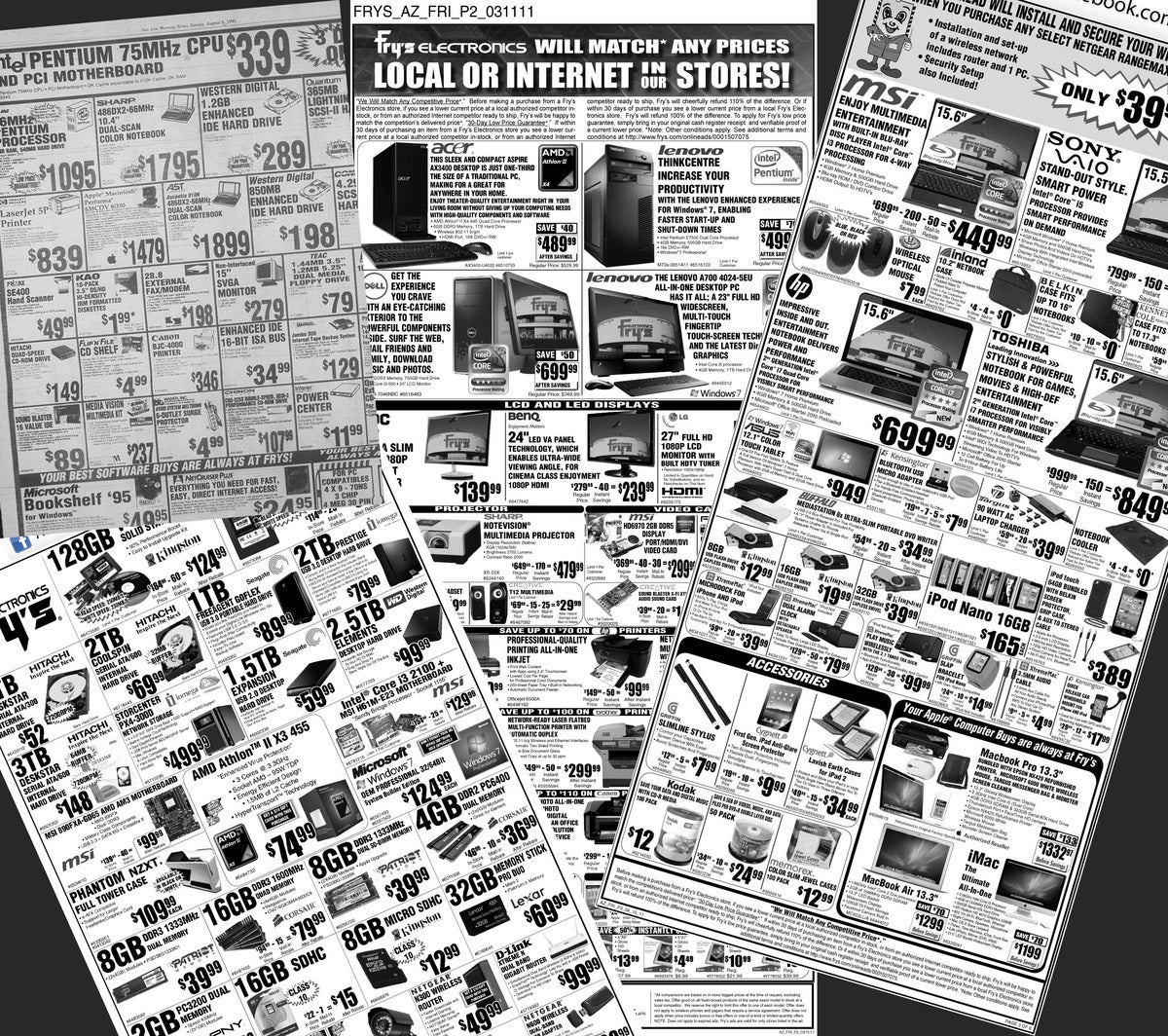 Fry’s Electronics
Fry’s ElectronicsFry’s weekly eight-page circulars in the newspaper inspired close study to ferret out the best deals.
Each store would have all eight pages of the circular pinned up to a wall so everyone would have to eyeball it for good deals. You’d patiently wait for the nerd in front to finish scanning it before your turn came.
Then it was off to wander the thousands of square feet, looking for things we didn’t need. Fry’s wasn’t all PC-related, as you could buy everything from toaster ovens to massagers and shavers, as well as AC units, plus “big screen” rear projection TVs. The PC was front-and-center, though, and much of every Fry’s was dedicated to pre-built PCs, laptops, and all of the accessories that went with it.
 Maximum PC
Maximum PCIn 2007, if you were going to do a PC building challenge, the place to get the parts was Fry’s Electronics. I won this contest by the way.
If you went to Fry’s for a CPU, you’d have to walk to the back and look at a wall of CPUs pinned up in a plastic protective box. Each would have a dot-matrix-printed mailing label with its price next to it. Older CPUs built up a thick layer of stickers as their prices were cut over time.
You couldn’t just pick a CPU or RAM off the shelf, either—an employee would have to release it from a chain-link security cage.
Of course, that’s only after you made the Death Star trench run of impulse items. In Fry’s heyday, it could take 30 minutes or more just to get out of the store, because the lines were so long. Fry’s management was smart enough to surround waiting customers with eye-level shelves of chips and candy bars, CD jewel cases, blank DVD-Rs, cell phone chargers, and $5 flashlights. If your shopping cart wasn’t full when you entered the line, it would be by the time you made it to a cashier.
And it wasn’t because there weren’t enough cashiers. The action in Fry’s would usually be so busy that the store would have dozens of cashiers stationed at a long counter. One harried person worked full-time directing buyers to available registers. Each cashier station usually had a few more small items you could add to your pile of purchases, lest you forget.
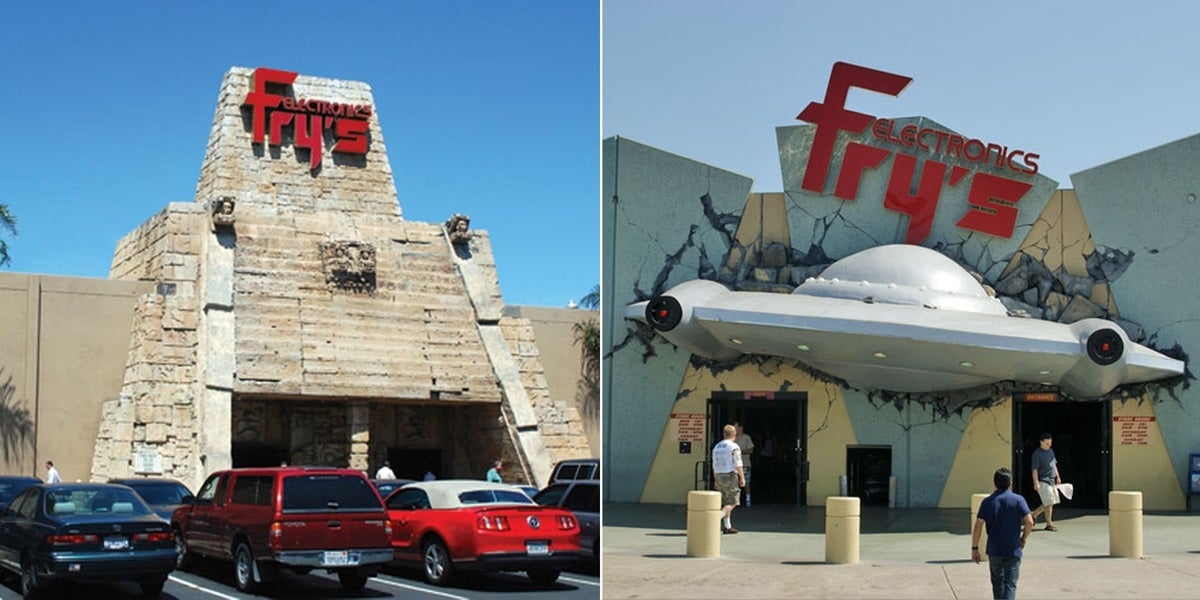 Fry’s Electronics
Fry’s ElectronicsThe San Jose Fry’s and the Burbank Fry’s.
Fry’s management didn’t really want you to leave, either. Most stores featured a café with coffee, soft drinks, and snacks. You could grab a magazine off the huge rack (Fry’s had a bigger selection than any newsstand) and thumb through it while you drank a coffee and rested your weary feet. There would be no Comic Book Guy to tell you to buy the comic or move on, either—like a Las Vegas casino, Fry’s knew the longer you stayed, the better the odds that you’d buy something.
Even visiting different Fry’s locations became a bragging point for nerds. The flagship Sunnyvale, California store looked like the inside of a computer. Other stores were built around themes like the Wild West, a battle between Aliens and the Army, or a Mayan temple. Just like a baseball fanatic can proudly say they visited Fenway Park or Wrigley Field, a computer nerd could talk about the Burbank or Phoenix Fry’s they visited while on vacation.
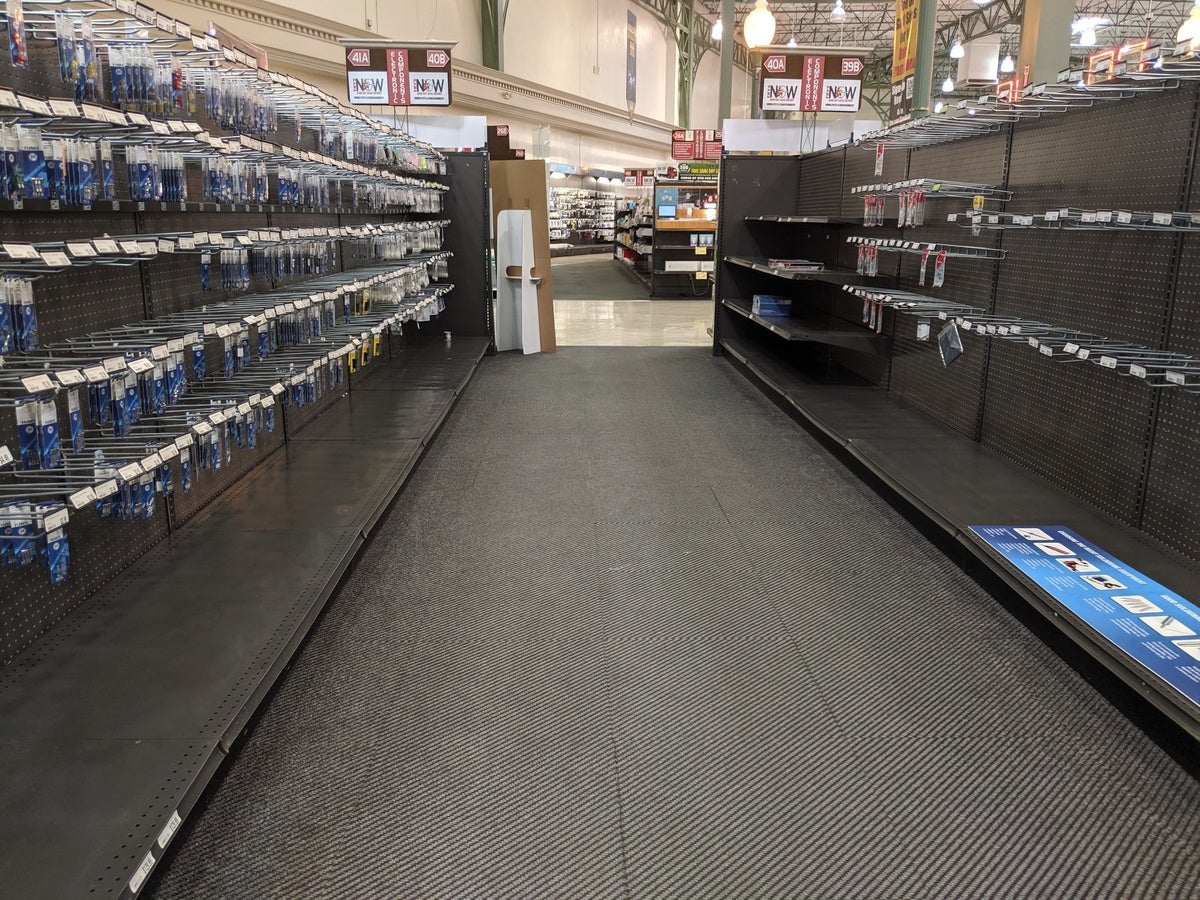 Gordon Mah Ung
Gordon Mah UngBarren shelves met shoppers in 2019. In its heyday, nerds of all stripes would scour the full shelves for good deals.
A long death spiral
The days of having to visit Fry’s Electronics for PC parts or a pack of Slim Jim’s are long gone, though, and it showed. During much of the last decade, my friends and I found fewer reasons to visit the store. Online shopping had taken a firm hold, and Fry’s just could not compete.
The last time I made the trip was in 2019, for pure nostalgia, with a relative from Colorado for whom the highlight of every family visit was the trip to Fry’s Electronics. We had made the drive to Fry’s probably a hundred times over the years so he could ogle at hardware that just didn’t make past the Rockies. At this last Fry’s visit, we found barren shelves and employees who seemed to be under orders to move inventory from one shelf to the other just to keep themselves busy.
Fry’s was dead, it just didn’t know it. As sad as it is, I’ll always have my memories of the good times at Fry’s.
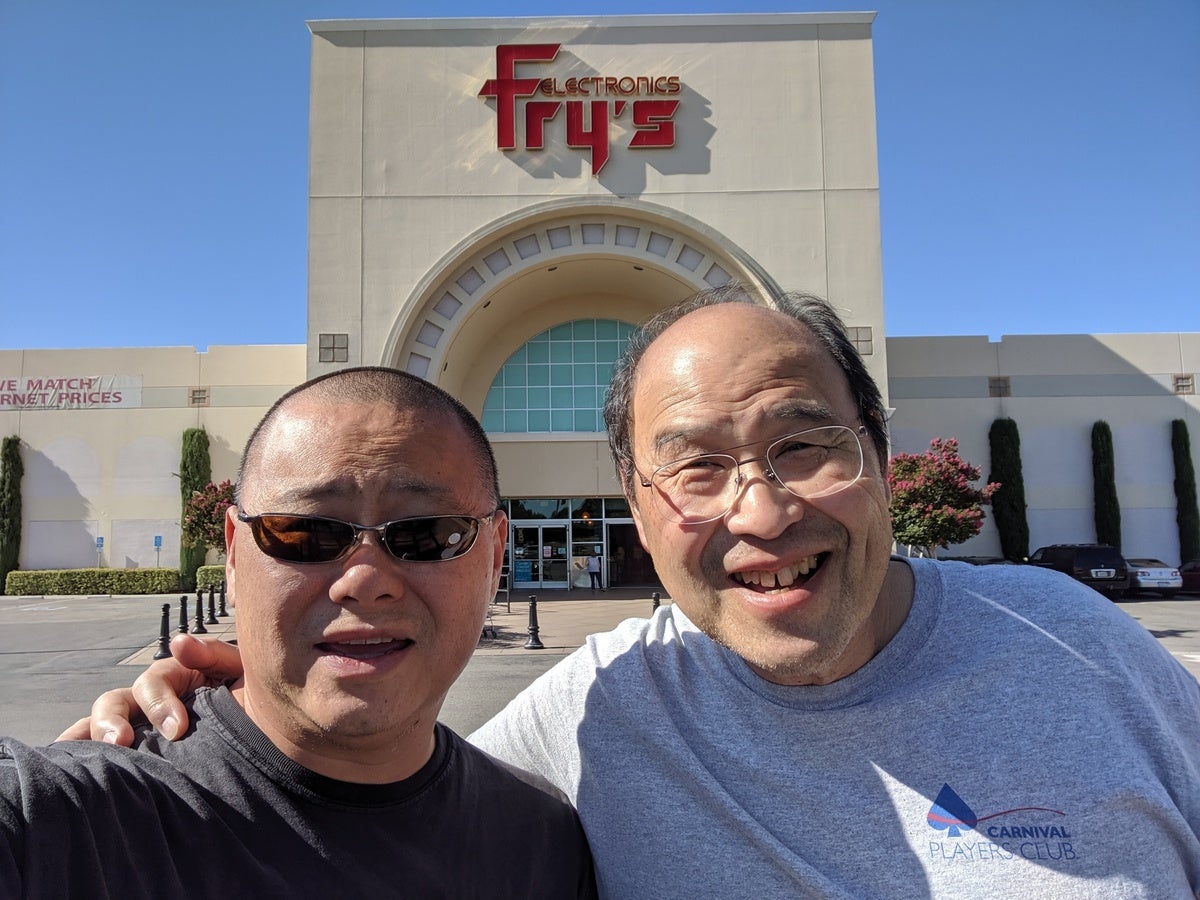 Gordon Mah Ung
Gordon Mah UngGoodbye Fry’s, we hardly knew ye.
Note: When you purchase something after clicking links in our articles, we may earn a small commission. Read our affiliate link policy for more details.
One of founding fathers of hardcore tech reporting, Gordon has been covering PCs and components since 1998.

